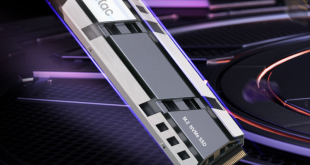It is always hard to quantify the performance of audio components as many of the characteristics will be based on individual hearing and opinions. In terms of the software though, it is clear this package works well and there are plenty of options available.
Sadly, it takes several seconds to load each time (even from our Test solid state drive), and we feel the company really could have spent a little more time on the design. The CrystalVoice options are very useful and when it is all set up perfectly it works very well, but it did take us a while to get the settings tuned to our own taste.
Firstly we will look at the Beamforming microphone, which as we eluded to in the introduction should allow you to cancel out background noise. Unfortunately, this does rely on you getting the settings spot on as the option to vary the beam ‘wedge' can be altered with the software.
Initially it was set to a very narrow wedge, which meant due to our set-up that it didn't pick up our voice at all – we placed the microphone on top of our monitor at a distance of around 60cm. After increasing the wedge size slightly our voice was mostly picked up, but you will need a fairly large margin – in case you twist your head and continue talking, say while altering the sound volume on your speakers (placed at the side of our monitor).
If you do increase the wedge to its maximum (or too wide) you will start to pick up a lot more echo and eventually any external noises. Overall our experience with the microphone was very positive, it did work better than a standard microphone, and once you get it set-up correctly will offer great vocal pick-up with little background noise. This makes it great for gaming or for a general Skype chat.
The audio performance of the Creative Sound Blaster Z Sound Card is very impressive. It works right out of the box, and for once, we didn't have any driver issues (something Creative Sound cards can be prone to). The quality of the sound is certainly superior to the onboard sound from our Gigabyte 990FXA-UD3 motherboard, this is even noticeable with an inexpensive pair of headphones.
However, for all of our tests we were using our Microlab FC360 speakers, which offer very good quality at a modest price point.
Our first test is always with music, and as such we played a few standard tracks, for instance, Magnetic Man – Perfect Stranger (Ft. Katy B) and Emile Sande – Heaven. Both of which have a large range of produced sounds, and require a careful balance of the bass. We were generally happy with audio performance even when directly comparing it against one of the best X-Fi range cards, the Creative X-Fi Titanium.
We were even impressed when we turned the crystalliser and surround options up, although we wouldn't want to listen to stereo sourced music with 100% surround settings.
We then proceeded to test with a different range of music, including high-quality recorded classical music, featuring some live, professionally recorded orchestral works. We also connected our Playstation 3 to the digital input of the sound card, and then tested the sound output in various games, including but not limited to Gran Turismo 5 and Call Of Duty: Modern Warfare 3.
Throughout all of these tests the sound-quality was excellent and clearly the SoundCore3D processor works well. The signal to noise output is quite high at 116 dB but this does fall short of competing models by ASUS.
Another coveted feature of the Creative Sound Blaster Z is the 600 Ohm Dedicated Headphone Amplifier, which allows it to support a wide range of headphones. With our Sennheiser HD 280 Pro Headphones we were very impressed with the sound production. There was a solid balance of bass and treble and we thoroughly enjoyed some Call Of Duty gaming due to realistic reproduction of gunfire and ambient noises.
 KitGuru KitGuru.net – Tech News | Hardware News | Hardware Reviews | IOS | Mobile | Gaming | Graphics Cards
KitGuru KitGuru.net – Tech News | Hardware News | Hardware Reviews | IOS | Mobile | Gaming | Graphics Cards



My biggest problem with creative has always been their drivers and software. it is so unoptimised and clunky and often there will be huge bugs which take a long time to fix. I try to avoid them when possible if I was being honest.
How dare you speak the truth Joe!